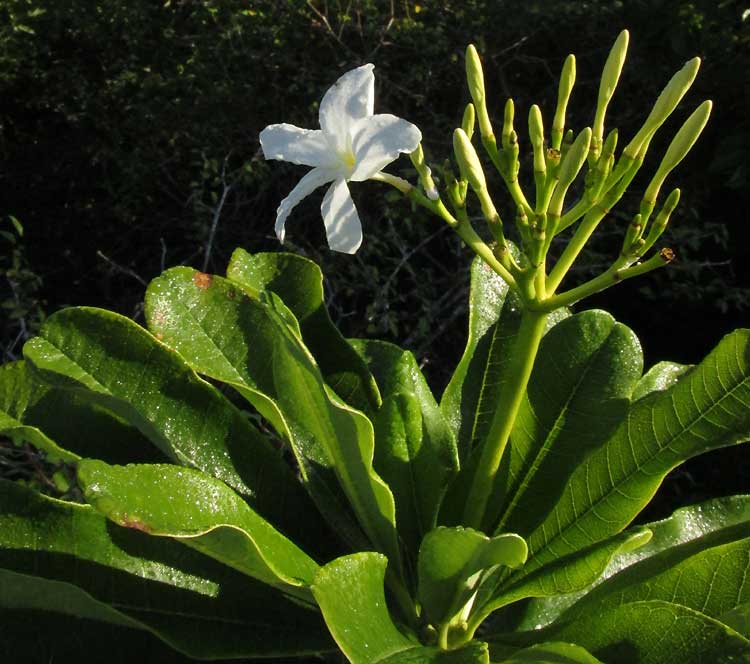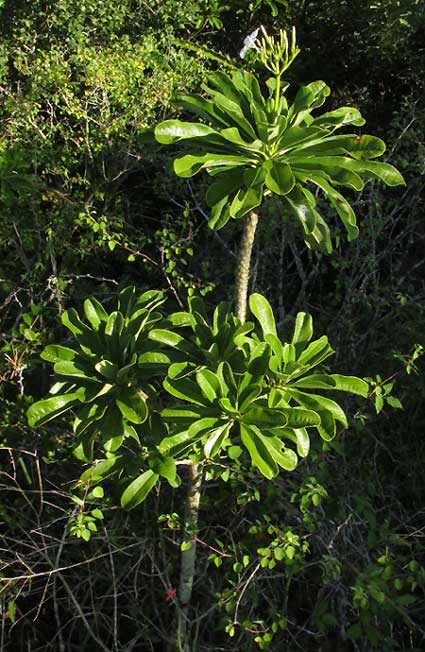Excerpts from Jim Conrad's
Naturalist Newsletter

from the November 23, 2014 Newsletter issued from Río Lagartos, on the Yucatan Peninsula's northern coast (~N21.60°, ~W88.16°), Yucatán state, MÉXICO
WILD FRANGIPANI
South of Río Lagartos, in the transition zone between marshes and the modestly higher "upland" area (ten feet or so), thin soil atop outcropping limestone hosts lots of interesting plants. Usually the plants are interesting because they're endemics found only in this area, and/or display remarkable adaptations to deal with the thin, highly calcareous soil and the long dry seasons when such thin soil must become little more than dust. Often such plants are succulents, the gummy material inside them storing water for the dry season. One such plant, with thick, succulent stems and standing about head high, is shown below:

A close-up of foot-long leaves clustered at a stem's tip, with an inflorescence's first, wonderfully fragrant flower blossoming, is shown at the top of this page.
This is one of two native Yucatán Frangipani or Plumeria species, PLUMERIA OBTUSA. Frangipanis produce those beautiful, fragrant flowers that in Hawaii are strung onto the necklaces called leis. Because of that, most North Americans think of Frangipanis as Hawaiian plants, but in fact they're native of the Yucatán. Both species are planted in tropical and warm climates worldwide, because of their exquisite flowers and ease of cultivation. The other species, Plumeria rubra, is native from central Mexico south through Central America to Colombia and Venezuela in South America, but our Plumeria obtusa is more of a native of Caribbean islands, plus southern Florida, southern Mexico, Belize and Guatemala.
from the September 19, 2010 Newsletter issued from Hacienda Chichen Resort beside Chichén Itzá Ruins, central Yucatán, MÉXICO; limestone bedrock, elevation ~39m (~128ft), ~N20.676°, ~W88.569°
WILD FRANGIPANI WITH FRUITS
On my bike ride last week south of Pisté I passed by several fruiting Frangipanis apparently well established in the forest. They're PLUMERIA OBTUSA. It grows to about 25 feet tall (8 m). The still-green capsular fruits and leaves are shown below:
